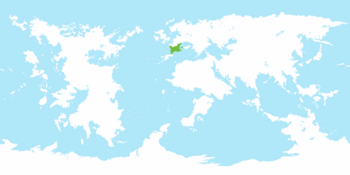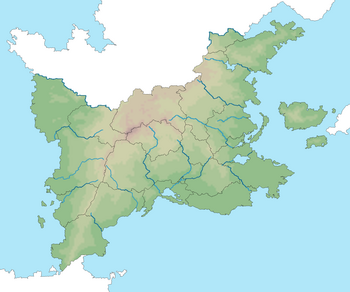Toloria: Difference between revisions
| Line 123: | Line 123: | ||
==Demographics== | ==Demographics== | ||
===Ethnic Groups=== | |||
Ethnic Tolorians, also referred to as Zulu people, make up the majority of Tolorian citizens, constituting __ percent of the population. The [[Wikipedia:Hutu|Hutu]] population is the largest minority, making up ___ of the population. However their numbers have been dwindling in recent years. The [[Yorulu]] make up ___ of the population. This ethnic group came about as a result of colonization. Immediately following the granting of its independence, many of the colonial citizens chose to stay and continue to capitalize of the country's abundant resources. Seeing a chance to capitalize on ending rule by the former colonial power, the Tolorian rulers enacted the law of miscegenation, forcing interracial breeding. This led to the Yorulu, meaning "multiple roots" in the native language, being created. In the last decade, this group has grown exponentially. | |||
==Government and Politics== | ==Government and Politics== | ||
==Law Enforcement and Crime== | ==Law Enforcement and Crime== | ||
Revision as of 01:49, 8 August 2019
This article is incomplete because it is pending further input from participants, or it is a work-in-progress by one author. Please comment on this article's talk page to share your input, comments and questions. Note: To contribute to this article, you may need to seek help from the author(s) of this page. |
Tolorian Empire | |
|---|---|
|
Flag | |
| Motto: ---- In Steadiness, Prosperity | |
| Anthem: Valtýr | |
 Toloria in the International Northwestern Union | |
 Map of Toloria | |
| Capital | Asaleka |
| Official languages | Setswana |
| Recognised national languages | Sigani |
| Recognised regional languages | Helurian |
| Ethnic groups (2018) |
|
| Demonym(s) | Tolorian |
| Government | Unitary Semi-Presidential Republic |
| Dumisile Gwaza | |
| Deda Meshindi | |
| Legislature | National People's Assembly |
| Establishment | |
• Kingdom | October 25th 1398 |
• 2nd Republic | June 1st 1945 |
| Area | |
• Total | 1,257,094 km2 (485,367 sq mi) |
• Water (%) | 5.23 |
| Population | |
• 2018 estimate | 62,541,874 |
| GDP (PPP) | 2018 estimate |
• Total | 1.45 trillion |
• Per capita | $23,200 |
| Gini (2018) | medium |
| HDI (2018) | high |
| Currency | Yusis (ɣ) |
| Date format | dd/mm/yyyy |
| Driving side | right |
History
Geography
Climate
Biodiversity
Demographics
Ethnic Groups
Ethnic Tolorians, also referred to as Zulu people, make up the majority of Tolorian citizens, constituting __ percent of the population. The Hutu population is the largest minority, making up ___ of the population. However their numbers have been dwindling in recent years. The Yorulu make up ___ of the population. This ethnic group came about as a result of colonization. Immediately following the granting of its independence, many of the colonial citizens chose to stay and continue to capitalize of the country's abundant resources. Seeing a chance to capitalize on ending rule by the former colonial power, the Tolorian rulers enacted the law of miscegenation, forcing interracial breeding. This led to the Yorulu, meaning "multiple roots" in the native language, being created. In the last decade, this group has grown exponentially.

